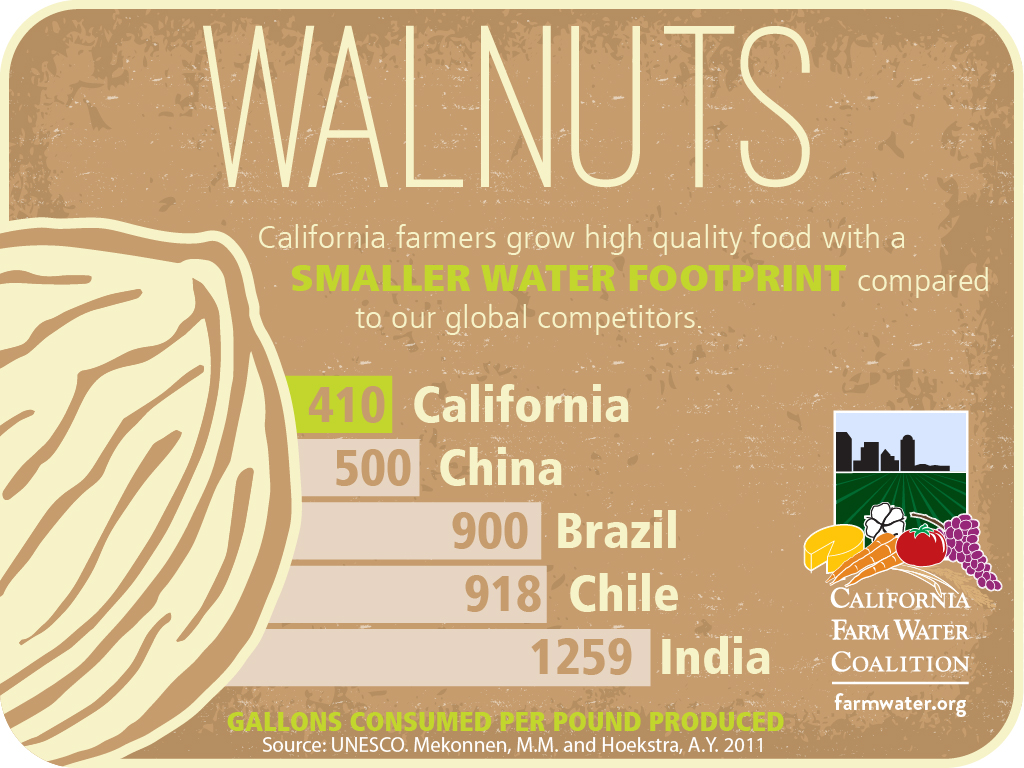Harvest Season is Here
Harvest is a time of year celebrated with festivals, fairs and fun, acknowledging the hard work, planning and perseverance of all those in the agricultural industry who are dedicated to bringing food to our tables. Harvest is truly a time to gather and recognize the growers, laborers, producers and all others who support food production. Although this celebratory time focuses on the food, it’s important to remember that this year’s harvest is the result of countless decisions along the way in policy and planting, sewing and sustainability, efficiency and irrigation, and, of course, water management and conservation.
Harvest in Westlands Water District
In western Fresno and Kings counties and the almost 1,100 square miles of prime agricultural land that make up Westlands’ service area, growers produce a variety of crops such as: alfalfa, barley, beans, carrots, corn, cherries, cotton, garlic, grapes, lettuce, and onions, to name a few. A large portion of harvest occurs July through October, with late season (September and October) crops like pistachios, cantaloupes, almonds and tomatoes being picked and shipped for fresh, dry, canned and frozen food. Water is often the most uncertain but always the most important ingredient for these crops and others. Growers in Westlands, on average, produce more than $1 billion worth of food and fiber annually. In 2017, Fresno and Kings counties produced over $9 billion[1] worth of agricultural production, of which growers in Westlands account for 11%. Growers in Westlands also provide on average 29,000 jobs annually and $3.6 billion in economic activity.[2] Water makes this possible.
How Water Gets to Your Food
Getting water to the right place at the right time is an intricate and delicate process. This year, California saw an abundance of rain, with precipitation levels 148% of average and snowpack 98% of average in the Northern Sierra by January, increasing significantly in February. However, precipitation and snowpack can only be utilized for food production throughout the growing season with proper storage and management. Westlands relies on water allocations from the Bureau of Reclamation, which determines how much water will be sent through the Central Valley Project (CVP) to Westlands and others. Precipitation and runoff from the snowpack is stored in CVP reservoirs, which ranged from 92% to 131% of average this year, seemingly an exciting statistic.
Allocation in Westlands Water District
Unfortunately, in March, Reclamation announced a 35% initial water allocation for Westlands and all other South-of-Delta agricultural water service contractors. For Westlands, the 35% allocation meant its growers could only plan on receiving 417,550 acre feet of the almost 1.2 million acre feet Westlands is entitled to under its contract. The allocation was increased four times throughout the year: 55% in March, 65% in April, 70% in June, and finally 75% in July. As planting and water use decisions in Westlands are largely made by the end of March, the increases in allocation does little to support production. However, late season allocations affect more than just the planting decisions. Late allocations result in, for example, increased groundwater pumping to sustain crops, inflated food prices, increased unemployment and decreased economic activity in already disadvantaged communities, all of which could be lessened with an early and adequate allocation


How Low Allocation is Managed by Growers
Between 2007 and 2019, South-of-Delta agricultural water service contractors received an average allocation of 33%. Growers were forced to adapt to the uncertain and declining water allocations. The two images above represent the difference of planted versus fallowed land in Westlands when the District receives an allocation of 100% versus 0%. The areas in beige represent fallowed land while the areas in green depict utilized land. Over the years, growers have employed efficient methods of irrigation, such as drip-tape, to better utilize available water. Today, 90% of Westlands’ irrigated lands are served by efficient drip irrigation systems, representing an investment of over $500 million. Not only Westlands, but California as a whole, uses less water than our trade partners to produce some staple foods. In the examples below, California has a smaller water footprint than 4 other leading trade partners. However, no amount of irrigation efficiency can offset the impacts of a 0% allocation.






A Commitment to Harvest
Growers in Westlands persevere despite the uncertain allocations faced year after year. With conservation and sustainability always in mind, Westlands’ growers bring to harvest almonds for almond milk lattes, sauce for pizza and pasta, and lettuce for salads with responsible water use. Understanding how our waterways, precipitation, snowpack, irrigation practices, and policies affect the food we eat can help encourage and empower well informed consumers to think about what an early and adequate water allocation might mean to them and the bountiful California grown harvest available for breakfast, lunch, and dinner - even a healthy snack. Happy harvest!
